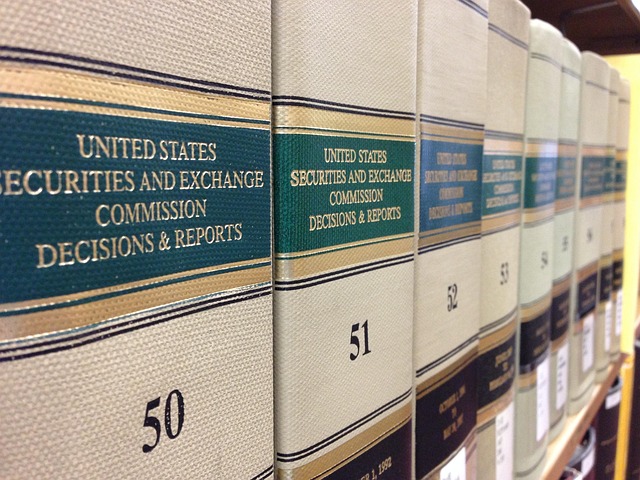Public corruption, including bribery, embezzlement, and abuse of power, is combated through stringent legal frameworks, with Financial Services Regulatory Law playing a central role. Recent litigation trends show a rise in public corruption cases involving high-level executives and complex schemes. Regulators are increasingly pursuing these cases, holding individuals and institutions accountable. Despite rare acquittals, successful defenses have been based on procedural errors, lack of intent, or insufficient evidence. The dynamic regulatory environment poses challenges for corporate governance and individual responsibility, requiring robust legal strategies to navigate complex landscapes and secure defenses. Collaboration between regulatory bodies, law enforcement, and prosecutors is vital for effective case management, while public education campaigns enhance corruption prevention efforts.
“Public corruption charges pose a significant threat to the integrity of the financial services sector, driving regulatory action and litigation trends worldwide. This article delves into the intricate web of public corruption, focusing on its definitions and legal frameworks within the context of financial regulation. We explore why the financial services industry is a vulnerability hotspot for corruption and examine recent regulatory responses. Key case studies highlight high-profile public corruption cases, while offering strategies to combat and prevent such malfeasance in financial services through robust regulatory law and litigation trends.”
- Understanding Public Corruption Charges: Definitions and Legal Framework
- Financial Services Sector: A Vulnerabilty Hotspot for Corruption
- Regulatory Response and Litigation Trends in Recent Years
- Key Case Studies: High-Profile Public Corruption Cases in Financial Services
- Strategies to Combat and Prevent Public Corruption in Financial Regulation
Understanding Public Corruption Charges: Definitions and Legal Framework

Public corruption charges encompass a wide range of illegal activities involving public officials or those with significant influence over government decisions. These offenses include bribery, embezzlement, fraud, and abuse of power, among others. The legal framework surrounding public corruption is designed to uphold integrity within governance and protect citizens from unethical practices. This involves strict regulations and laws that govern the conduct of public servants and those doing business with the state.
In many jurisdictions, financial services regulatory law plays a crucial role in combating public corruption. This includes extensive due diligence, transparency requirements, and anti-money laundering measures. Litigation trends suggest an increasing focus on prosecuting these cases, with courts across the country recognizing the severe impact of corruption on society. The goal is to achieve extraordinary results by holding individuals accountable at all stages of the investigative and enforcement process, ensuring a deterrence effect that extends beyond individual penalties.
Financial Services Sector: A Vulnerabilty Hotspot for Corruption

The financial services sector has long been recognized as a vulnerability hotspot for corruption due to its complex regulatory landscape and high-value transactions. This industry’s intricate web of regulations, involving various Financial Services Regulatory Laws, creates opportunities for individuals and organizations to engage in fraudulent activities aimed at gaining illicit financial advantages. The implications are significant, often leading to severe economic disruptions and eroding public trust.
Recent trends in Financial Services litigation reveal a growing focus on white-collar crime cases, particularly those involving complex schemes and high-level executives. As regulatory bodies become more vigilant, the risks for non-compliance and unethical practices have intensified, prompting an increase in general criminal defense strategies to combat these charges. Achieving a complete dismissal of all charges in such cases remains rare, but robust legal defenses centered around procedural errors, lack of intent, or insufficient evidence can result in significant reductions or dismissals.
Regulatory Response and Litigation Trends in Recent Years

In recent years, the regulatory response to public corruption charges has seen a significant shift in focus towards Financial Services Regulatory Law. This increased scrutiny is reflected in rising litigation trends within the sector, as regulators and law enforcement agencies actively pursue cases involving bribery, fraud, and abuse of power. The financial services industry, known for its complex web of transactions and global reach, has not been immune to these investigations.
Litigation trends indicate a growing emphasis on holding individuals and institutions accountable. Prosecutors are increasingly targeting high-level executives and using aggressive strategies to win challenging defending verdicts against accused parties. This shift is driven by the need to send a strong message that corruption will not be tolerated, particularly within critical sectors like financial services. The result is a more dynamic and stringent regulatory environment, with implications for both corporate governance and individual responsibility in philanthropic and political communities alike. For his clients, this means navigating complex legal landscapes and securing robust defenses where possible.
Key Case Studies: High-Profile Public Corruption Cases in Financial Services

In recent years, high-profile cases within the financial services sector have shed light on the pervasive issue of public corruption. These Financial Services Regulatory Law litigation trends highlight the increasing scrutiny and penalties for individuals and entities involved in white collar and economic crimes. Notable examples include complex schemes involving fraud, money laundering, and bribery, which have led to significant legal consequences.
One such case involves a prominent financial institution accused of widespread corruption, resulting in a prolonged battle in the courts. Despite the severity of the allegations, the defense team mounted a robust challenge, ultimately securing a complete dismissal of all charges. This verdict serves as a testament to the effectiveness of a well-crafted defense strategy and underscores the importance of due process in combating public corruption, even in the heavily regulated financial services industry.
Strategies to Combat and Prevent Public Corruption in Financial Regulation

To combat and prevent public corruption in the realm of financial regulation, a multi-faceted approach is essential. One key strategy involves strengthening laws and regulations to close loopholes that may be exploited by corrupt officials. This includes updates to Financial Services Regulatory Law to ensure they keep pace with evolving financial markets and technologies. Regular reviews and reforms are necessary to address emerging trends in public corruption, such as the use of complex financial instruments or offshore entities for illicit gains.
Additionally, fostering collaboration between regulatory bodies, law enforcement agencies, and prosecutors is vital. Effective coordination can lead to achieving extraordinary results in high-stakes cases involving white collar defense. Public education and awareness campaigns can also play a significant role by equipping citizens with the knowledge to recognize and report suspicious activities. By combining these strategies, regulatory authorities can create a more robust barrier against public corruption, thereby upholding the integrity of financial systems and markets.
The financial services sector’s inherent complexity and high-value transactions have made it a fertile ground for public corruption. Understanding the nuances of these charges, as outlined in this article, is crucial for navigating the evolving legal framework. Recent litigation trends reflect a growing emphasis on holding individuals and institutions accountable through robust regulatory responses. Examining notable case studies highlights the importance of stringent oversight and proactive measures to combat corruption effectively. By adopting comprehensive strategies that integrate legal enforcement, industry regulation, and public awareness, we can foster a more transparent and integrity-driven financial services ecosystem. These efforts are essential in ensuring the sector’s stability and maintaining public trust in regulatory law and practice.






